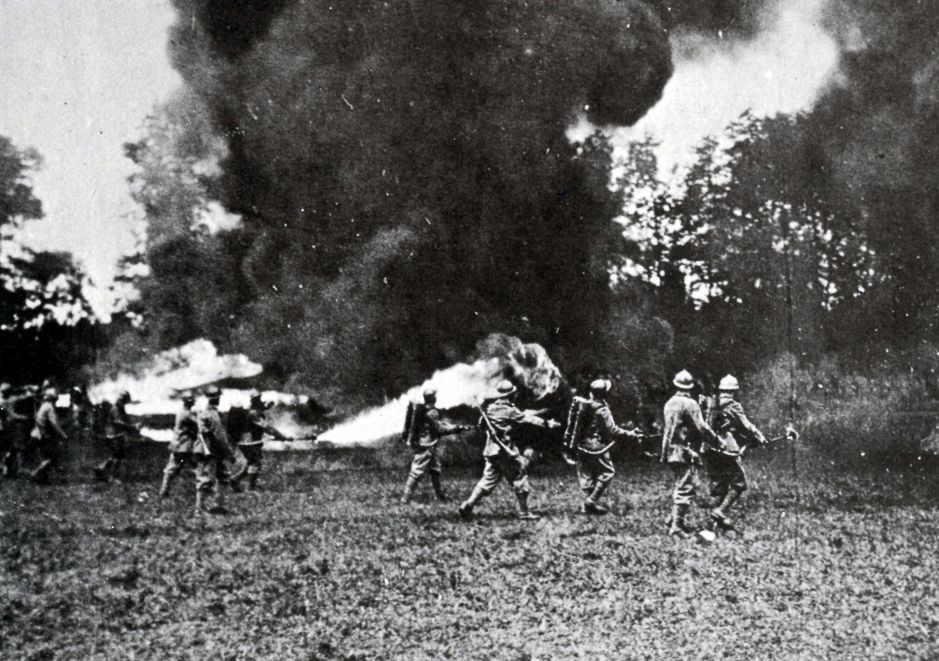Liquid Fire At Hooge WW1 (id:#64558)
Hooge, Belgium
1915-07-30 (1 other)
GWASL #8: Liquid Fire At Hooge (GWASL 1: AP Board Edition 2.0)
Designer: Ian Daglish
Starter kit scenario?: Deluxe scenario?:
No balance information available
Overview:
The Battle of Hooge represented one of the first major employments of the flamethrower, one of the most feared weapons introduced during World War I. Eleven days before the battle, British infantry had captured the German-occupied village of Hooge, located near Ypres in Belgium, by detonating a large mine. Using the flamethrowers to great effect, along with machine guns, trench mortars and hand grenades, the Germans reclaimed their positions on July 30, 1915, penetrating enemy front lines with ease and pushing the British forces back to their second trench. Though few men were lost to actual burns, a British officer reported later, the weapons had a great demoralizing effect, and when added to the assault of the other powerful weapons, they proved mercilessly efficient at Hooge.Attacker: German (Wurttemberg Infantry Regiment 126, 39th Infantry Division)
Defender: British (8th Rifle Brigade, 14th Division)
9.5 turns
Players: 2 OBA: Both Night: No| Unit Counts: |
| Squads: A:27.5 D:28.0 |
| AFVs: A:0 |
| AFVs: D:0 |
| Guns: A:3 D:3 |
| Misc Rules: |
| Map Board(s): |
| Publication | Board |
|---|---|
| GWASL Great War 1: Tankschreken! | G3 |
| GWASL Great War 1: Tankschreken! | G5 |
| Overlays: |
Errata (source)
Players wanting to play this game/Request a match:
Scenario info
| Action | Date |
|---|---|
| hoxson1 Uploaded an Image | 2020-01-07 15:20:21 |
| hoxson1 Modified the overview | 2020-01-07 15:20:02 |
| hoxson1 Set the designer field | 2020-01-05 16:54:48 |
| hoxson1 Uploaded an Image | 2020-01-05 16:43:27 |
| Danno Added the scenario | 2020-01-05 10:27:46 |
| File | Description | User | Views |
|---|---|---|---|
| (ww1 germ-brit.png) | Image | hoxson1 | 1032 |
| (ww1 germ flame.png) | Image | hoxson1 | 1047 |
| Description | Uploaded by |
|---|
| Title | Author | Date |
|---|
| Description | Uploaded by |
|---|
Quick Map View
No Map available yet! Please create one, or upload a map image file...



